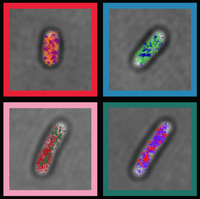Single-molecule studies offer unprecedented and direct access to biologically important heterogeneity and dynamics; this holds true for reactions involving purified biochemical components, as well as for reactions inside the complex biological milieu of living cells. During the past few years, we have developed such methods (single-molecule FRET, super-resolution imaging, and single-particle tracking) to answer long-standing questions in gene expression and repair. I will discuss examples of our in vitro single-molecule work focusing on the elucidation of the intricate sequence of conformational changes that allow RNA polymerase to first “open” the double helix of promoter DNA for starting gene transcription in bacteria, and then to “escape” from the promoter. I will discuss examples of our in vivo single-molecule work inside living bacteria, including our latest work of understanding the roles of the universal and multi-functional transcription factor NusG, which couples transcription and translation. If time permits, I will also discuss a new single-molecule FRET method that allows monitoring conformational changes within a single molecule for up to 1 hour, orders of magnitude longer that typical measurements. Our methods and biological observations are general and should apply to many systems and organisms.
Light, camera, single-molecule transcription action!

Host: Josh Milstein

